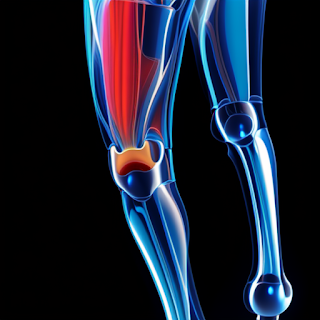Basal Joint Arthritis
Where the thumb and the wrist meet we find the basal joint or carpometacarpal joint. This is also referred to as the CMC joint. The thumb has a wide range of movements because of that joint. We can put our thumb opposite any of our fingers or put it in the palm of our hand. This is called opposition.
The joint is held together by ligaments. These ligaments can be injured by a sprain.
The ends of our joint bones are covered by cartilage. It keeps the bone separated. Cartilage is smooth and spongy. It allows one side of the joint to slide smoothly over the other side.
Any damage to ligament or cartilage can change the way the joint works. If the ligament gets damaged it won't hold together the joint properly. If cartilage is damaged or worn down there will be too much friction when one side of the joint slides over the other side.
If you break your thumb, especially the CMC joint, small fragments of bone might not line up quite exactly during the healing. And just like any precision tool,when things are not exactly lined up properly the tool will wear out faster. The same happens to the thumb. Even the slightest change will put too much stress on the joint. The cartilage will wear away faster and the joint bones will start rubbing together. An inflammation will develop and this is the start of arthritis.
At first your thumb might hurt a little when you start moving it. Once the movement gets going the pain will go away. But it will start hurting again after you have given the joint a rest. Eventually the thumb will hurt whether you move it or not..
Your doctor might have an X-Ray taken and he can estimate how much of your cartilage has worn down. There are some choices of treatment:
* physical therapy
* anti inflammatory medicines like aspirin or ibuprofen
* cortisone shot
The therapist can show you how to control the symptoms. You can do this by using heat, rest or special exercises. You might need to wear a brace. He/she can also show you exercises that will make your hand steadier. This will protect your joint from stress and/or shock.
Personally I will not take any prescription pain killers. My choice would be to get a good product with Glucosamine/Chondroitin. You can tell your physician about not wanting prescription drugs. Many doctors today understand this and might be able to recommend a suitable replacement.
When the pain seems to be more than you can handle...and everybody's pain threshold is different....the doctor might give you a cortisone shot, He will give you that shot right into the joint. It might keep you almost pain free for a few weeks, sometimes a month or more.
As a very last resort you could have surgery.
I am sure you would like to prevent to get to the stage where surgery is necessary. You need to find a Natural cure for arthritis
And you can read more about that on My Blog
Article Source: http://EzineArticles.com/?expert=Joyce_C._Thorburn
Article Source: http://EzineArticles.com/2077849
The joint is held together by ligaments. These ligaments can be injured by a sprain.
The ends of our joint bones are covered by cartilage. It keeps the bone separated. Cartilage is smooth and spongy. It allows one side of the joint to slide smoothly over the other side.
Any damage to ligament or cartilage can change the way the joint works. If the ligament gets damaged it won't hold together the joint properly. If cartilage is damaged or worn down there will be too much friction when one side of the joint slides over the other side.
If you break your thumb, especially the CMC joint, small fragments of bone might not line up quite exactly during the healing. And just like any precision tool,when things are not exactly lined up properly the tool will wear out faster. The same happens to the thumb. Even the slightest change will put too much stress on the joint. The cartilage will wear away faster and the joint bones will start rubbing together. An inflammation will develop and this is the start of arthritis.
At first your thumb might hurt a little when you start moving it. Once the movement gets going the pain will go away. But it will start hurting again after you have given the joint a rest. Eventually the thumb will hurt whether you move it or not..
Your doctor might have an X-Ray taken and he can estimate how much of your cartilage has worn down. There are some choices of treatment:
* physical therapy
* anti inflammatory medicines like aspirin or ibuprofen
* cortisone shot
The therapist can show you how to control the symptoms. You can do this by using heat, rest or special exercises. You might need to wear a brace. He/she can also show you exercises that will make your hand steadier. This will protect your joint from stress and/or shock.
Personally I will not take any prescription pain killers. My choice would be to get a good product with Glucosamine/Chondroitin. You can tell your physician about not wanting prescription drugs. Many doctors today understand this and might be able to recommend a suitable replacement.
When the pain seems to be more than you can handle...and everybody's pain threshold is different....the doctor might give you a cortisone shot, He will give you that shot right into the joint. It might keep you almost pain free for a few weeks, sometimes a month or more.
As a very last resort you could have surgery.
I am sure you would like to prevent to get to the stage where surgery is necessary. You need to find a Natural cure for arthritis
And you can read more about that on My Blog
Article Source: http://EzineArticles.com/?expert=Joyce_C._Thorburn
Article Source: http://EzineArticles.com/2077849


Comments
Post a Comment